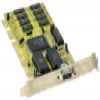Windows 2.0 is a version of the Microsoft Windows graphical user interface-based operating environment that superseded Windows 1.0. Windows 2.0 was said to more closely match Microsoft's pre-release publicity for Windows 1.0 than Windows 1.0 did. Last release was 2.03 / November 1987.
Windows 2.0 allowed application windows to overlap each other, unlike its predecessor Windows 1.0, which could only display tiled windows. Windows 2.0 also introduced more sophisticated keyboard-shortcuts and the terminology of "Minimize" and "Maximize", as opposed to "Iconize" and "Zoom" in Windows 1.0. Windows 2.0 was package with AT&T Computers as a test software for many educational institutions. Windows 2.0 for the schools was actually with the "plug 'n' play" capabilities minus the Windows 95 interface.
The first Windows versions of Microsoft Word and Microsoft Excel ran on Windows 2.0. Third-party developer support for Windows increased substantially with this version (some shipped the Windows Runtime software with their applications, for customers who had not purchased the full version of Windows). However, most developers still maintained DOS versions of their applications, as Windows users were still a distinct minority of their market.
On March 17 1988, Apple filed suit against Microsoft and Hewlett Packard, accusing them of violating copyrights Apple held on the Macintosh System Software. Apple claimed the "look and feel" of the Macintosh operating system, taken as a whole, was protected by copyright and that Windows 2.0 violated this copyright by looking extremely similar to the original Mac OS.
Windows 2.0 was supplemented by Windows/286 and Windows/386 in 1988. Windows 2.0, Windows/286 and Windows/386 were superseded by Windows 3.0 in May 1990.




